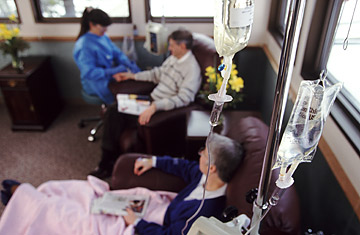
(2 of 2)
That disparity is especially apparent when it comes to lung cancer. The report showed that lung-cancer incidence and death rates across the country varied widely, depending on the existence of smoking bans and the amount of state taxes on cigarettes. Data show, for example, that California, which was the first state to adopt a public-smoking ban, had the greatest decline in lung-cancer death rates in the U.S. — 2.8% per year from 1996 through 2005, which was twice the decline of many Midwestern and Southern U.S. states. Kentucky, which has low excise taxes on cigarettes and only partial smoking bans, had the country's highest lung-cancer incidence and mortality rates; it also had the highest percentage of cigarette smokers: nearly 30% of its adult population.
According to Bevers, California saw a decline in lung-cancer incidence even among women, a reversal of the overall trend in lung-cancer rates, which have been steadily increasing in women since 1975. Researchers say the difference in lung-cancer rates between the sexes — incidence has been dropping in men since 1991 — may owe in part to the fact that women in the U.S. began smoking decades later than men.
The annual report, which was produced by the American Cancer Society, the Centers for Disease Control and Prevention and the National Cancer Institute, also underscores the value of screening. Doctors currently have good tests — such as PSA tests, mammograms and colonoscopies — for detecting lung, prostate, breast and colorectal cancers. The death rates for these diseases have dropped, according to recent data. Meanwhile, mortality for liver, esophageal and pancreatic cancers have risen in many populations — and it is probably no coincidence that regular, reliable tests for those conditions don't exist.
The larger goals, say researchers, are earlier detection, better treatments and, most important, prevention. As more young people get vaccinated for hepatitis B, for instance, liver cancer, which is often a result of infection with the virus, may see its rates begin to drop in the coming years. But that depends on whether patients continue to use the screening methods currently available; other studies show that only about half of American adults get regular preventive care — including regular cancer screens like mammograms, PSA tests and colon exams.
